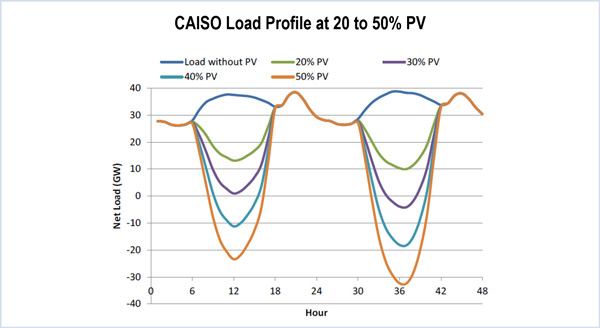By Tom Kleckner
North America’s independent grid operators released a report Thursday that concludes the “ongoing effectiveness” of renewable technologies will depend directly upon the electric system’s ability to “accommodate them.”

The report captures the results of a study conducted by the IRC’s Emerging Technologies Task Force (ETTF), which was formed in 2015 to review the deployment of new technologies and identify where that deployment intersects with operational and policy considerations.

The report notes more than 80% of North America’s wind and solar capacity lies in regions served by IRC members. These technologies face a serious challenge, the report said — the electric system itself.
SPP CEO Nick Brown, the IRC’s current chair, noted grid operators from different geographic regions “overlap … in their thinking” of the role emerging technologies will play.
Technology Precedes Policy
“Here’s the challenge: Technology always precedes policy,” Brown said during a panel discussion last week at the RTO Insider/SAS ISO Summit. “And as technology presents things, then we have to understand how to manage them [through] appropriate policies.”
The IRC is an affiliation of nine nonprofit grid operators that serve two-thirds of electricity consumers in the U.S. and more than half in Canada.
“Any time the IRC speaks with strong consensus on a matter like it has done here, I hope our industry takes notice,” Brown said in a news release.
“Each of the IRC member organizations is unique,” said ETTF Chair Edward Arlitt, of Ontario’s Independent Electricity System Operator. “One ISO or RTO may have greater solar capacity in their region, another may be farther along in their handling of DERs, and all of us have regulatory and operational constraints unique to the provinces, states and regions in which we serve.”

The task force used a straw poll to determine that handling emerging technologies was the highest-ranked priority among IRC members.
‘Imperatives’
The task force’s research produced what it called imperatives necessary to ensure the grid’s continued reliability and efficiency as the penetration of emerging technologies increases:
- Manage the variability of supply and increasing levels of renewable integration enabled by emerging technologies. Is there enough “cohesive innovation” happening to integrate renewable generation, grid-scale energy storage and microgrids’ disparate components into the Bulk Electric System?
The IRC said while it is agnostic to specific technologies that may facilitate renewable integration, it supports policies that “accommodate emerging renewable integration technologies” and pursuing “continentwide consensus” on how much integration will be achieved through regional or interregional trade.

The report recommends avoiding committing too early to specific technologies and calls for a “suitable policy environment” to ensure new technologies and approaches continue to be developed, tested and applied to renewable integration.
- Address the IRC members’ lack of consistent, reliable, DER-related data as the grid becomes more distributed and less predictable.
The report says the lack of consistent and reliable data — such as between SCADA systems and new phasor measurement units (PMU) — should not constrain “situational-awareness arrangements” across transmission/distribution connections. It also says RTOs should have access to basic, static DER data series in their service territories. The task force said location, size and technological capabilities are examples of data needed to manage an increasingly distributed system.
The task force recommended developing an operations data framework flexible enough to handle local differences in DER penetrations.
- Noting FERC’s November 2016 Notice of Proposed Rulemaking, which would require wholesale markets to accommodate energy storage and DER, the IRC suggests a formalized framework to help RTOs “harness the capabilities and manage the risks” of intermittent DER growth. (See FERC Rule Would Boost Energy Storage, DER.)
The task force recommends jurisdictions with distribution system operators (DSO) conform to standards that allow safe interaction between DSOs, non-utility entities and the Bulk Electric System. It said it supports policies that ensure if distribution-level variability poses risk to system reliability, RTOs have “appropriate authority” over DERs or mitigate their impact on the grid.



